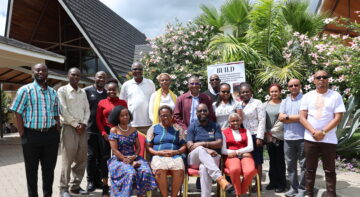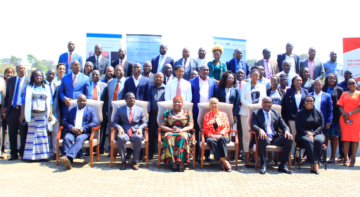Blogs

Parts of Northern Kenya have been struck by an epidemic of chikungunya, a mosquito borne viral infection. Half of the population in one Kenyan county which borders Ethiopia and Somalia has come down with the infection. There’s real risk of travellers spreading it to new areas. Professor Collins Ouma from the African Institute for Development Policy in Nairobi answers some important questions about the outbreak.
What is chikungunya? What are its common symptoms?
Chikungunya virus is transmitted to humans through mosquito bites. The most common symptoms of the chikungunya virus infection are fever and joint pain. Other symptoms include headaches, muscle pain, joint swelling or a rash. In addition, other people develop sudden fever, chills, nausea and vomiting.
In Kiswahili, “chikungunya” means “that which contorts or bends up”. This refers to the contorted or stooped posture of patients who are afflicted with the severe joint pain (arthritis). This is one of the disease’s most common features.
Symptoms usually emerge between three and seven days after someone is bitten by an infectious mosquito. There is no vaccine to prevent or medicine to treat the chikungunya virus infection. The only available method of prevention is through shielding from mosquito bites. Travellers visiting countries where there are cases of chikungunya virus should use insect repellent, wear long sleeves and pants and stay in places with air conditioning or that use window and door screens.
Where is it likely to occur and why?
Outbreaks have been documented in Africa, Asia, Europe, and the Indian and Pacific Oceans; there is also an anticipated risk that the virus will be imported to new areas by infected travellers. By 2013, local transmission had been identified in 45 countries or territories throughout the Americas with more than 1.7 million suspected cases reported to the Pan American Health Organisation from affected areas.
The mosquito vectors associated with large outbreaks of chikungunya are Aedes aegypti, which is also associated with yellow fever, and Aedes albopictus. Both are associated with dengue fever as well. Aedes aegypti is confined to the tropics and sub-tropics while the Aedes albopictus mainly live in temperate and even in colder regions. In recent times, Aedes albopictus has spread from Asia to areas in Africa, Europe and the Americas.
Typical of mosquito vectors, the Aedes albopictus thrives in a wider range of water-filled breeding sites than Aedes aegypti. This explains the abundance of Aedes albopictus in rural, peri-urban and shady areas. Aedes aegypti is more closely associated with human habitation and uses indoor breeding sites as well as the same artificial outdoor habitats as Aedes albopictus.
In Africa, several other mosquito vectors have also been implicated in disease transmission. There is also accumulating evidence that some animals such as non-primates, rodents, birds and small mammals may act as reservoirs to the disease.
What similarities or differences are there when compared to its now better known cousin Zika?
Similar to chikungunya, the Zika virus is also primarily transmitted by biting Aedes aegypti female mosquitoes. It also has no preventive vaccines or medications and the only available treatment is supportive care of symptoms.
What is the global response to chikungunya?
The current responses to chikungunya are outlined by the World Health Organisation. The response has several focus areas. These include:
- formulating evidence-based outbreak management plans,
- providing technical support and guidance to manage cases and outbreaks in countries effectively,
- supporting countries to improve their reporting systems,
- providing training on clinical management, diagnosis and vector control at the local and regional level, and
- publishing guidelines and handbooks on case management and vector control for World Health Organisation member states.
There has been a heightened urgency to encourage affected countries to develop and maintain the capacity to detect and confirm cases, manage patients and implement social communication strategies to reduce the presence of the mosquito vectors.
Integrated vector control has mainly been through methods to reduce the source by eliminating all potential vector breeding places near the domestic or peri-domestic areas. Authorities have used larvicides to eliminate larvae and biological control. This is by, for instance, introducing fish that feed on the larvae in water tanks and other water sources.
Has Kenya been able to meet these guidelines and deal with the epidemic?
The Kenyan government has responded quickly to prevent the spread of chikungunya. One of its approaches has been to strengthen health systems, especially those associated with a well-functioning surveillance. This ensures responses to disease outbreaks are versatile and resilient.
The government has also emphasised building the capacity of health staff, using community-driven prevention measures. These prepare the local systems for quick response before external support is mobilised. In addition, there are also enhanced public-private partnerships and cross-border collaborations to curb the spread of the virus before it becomes an epidemic.
The government has realised that to effectively control the virus, health institutions must be adequately equipped. They need to detect early signs of unusual disease patterns, track and investigate cases, and must be able to diagnose and confirm outbreaks promptly.
These approaches present an all-inclusive paradigm in health systems development that not only combat Chikungunya but also other infectious diseases in Kenya and beyond.
This article was originally published in The Conversation on June 19, 2016.
Related Posts





